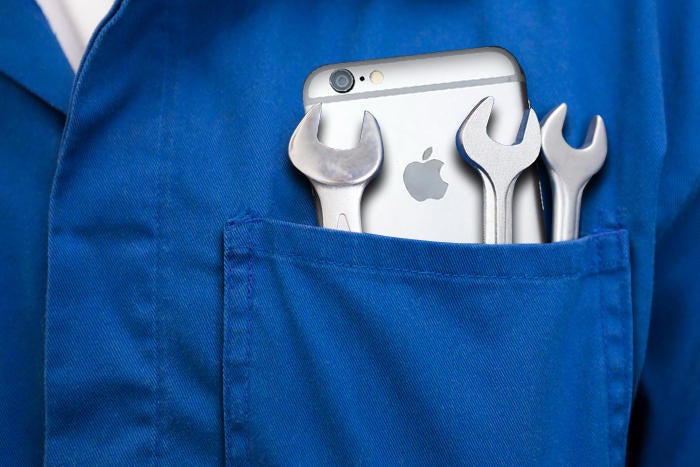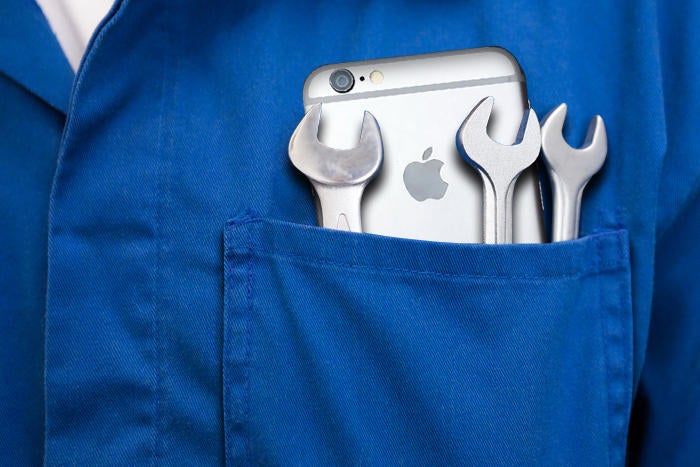
The right-to-repair is a crucial enterprise IT issue, as it always has been. Whether that means using a large IT operation’s team or one of the third-party repair providers that have been contracted to help, the demand that enterprises exclusively use one vendor to fix anything is abhorrent. And one can’t mention abhorrent without mentioning Apple’s repair history.
I’ve always been impressed by how clever (evil?) Apple can get when trying to protect its repair revenue. With that ind mind, a new report from MacRumors doesn’t disappoint. (The site picked up on a YouTube video from Phone Repair Guru detailing what’s going on.)
What’s impressive about this particular Apple maneuver is how intricate it is. Somehow, the company has coded the screens on its new iPhone 13 models to identify the original screen. When it’s replaced — even with another Apple authorized screen purchased from Apple — Face ID still won’t work.
I’ll let the original story tell a little more of the tale.
“If a customer gets their iPhone 13 display replaced by a third-party repair store or provider, such as those not licensed or affiliated with Apple through its Independent Repair Program, Face ID on the iPhone will no longer be usable,” MacRumors reported. “Despite this, if an iPhone 13 display is replaced with a ‘non-genuine’ or even a genuine, original iPhone 13 display, Face ID stops working, despite there seemingly being no hardware within the display itself needed for Face ID to function.”
In testing, the media outlet found that this apparently wasn’t a glitch. “The repair provider swapped two original iPhone 13 screens and, in both cases, Face ID was inoperative after the new screens were installed. It seems to be the case that if the original screen is put back with the original iPhone 13, Face ID returns, ruling out the possibility of an improper installation.”
To me, the most interesting/baffling part is that this lack of FaceID — a critical element of Apple’s authentication efforts — still kicks in, even when the replacement screen is authorized by Apple and/or directly from Apple. If it’s the exact same screen, how can the phone know?
Presumably, the screens either have identity embedded in them, whereby they will only work with the original phone. But given that Apple itself can replace the screen without issues, that suggests that there is a secret trick (perhaps a string of characters entered into the phone by the authorized repair person?) to installing the screen.
That would mean if Right To Repair efforts are coded into law worldwide, Apple would either have to remove that process or tell everyone what it is. I’m betting Apple would simply remove it. That way, if it’s careful, it would never have to admit that it concocted this whole scheme.
If Apple stopped spending time trying to find ways to screw customers and focused more on coming up with better features and functionality and true security, the company could actually reap even more money.
Then again, there are those who argue that Apple has pretty much hit the ceiling of its likely market share against Android. If that’s true, adding more features might not materially boost sales. Therefore, their efforts to retain all repair revenue makes sense.
Personally, I think Google’s “Don’t be Evil” tagline arose because it knew Apple better deserved the “Be Evil” title.



